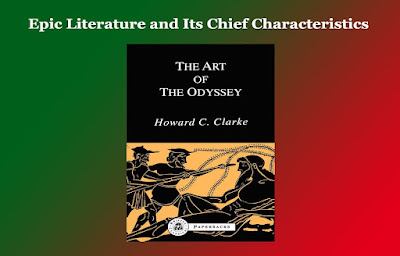19th Century Literary Movements
Explore The 19th century literary movements in this comprehensive article. It was a period of immense change and innovation in literature, marked by the rise of several influential literary movements.
19th Century Literary Movements
Introduction:
The 19th century was a period of immense change and innovation in literature, marked by the rise of several influential literary movements. These movements reflected shifting cultural, social, and political dynamics, shaping the course of literature for generations to come. Here are some of the key literary movements of the 19th century:
19th Century Chief Literary Movements
Romanticism (late 18th - mid-19th centuries): Romanticism emerged as a reaction against the rationalism and industrialization of the Enlightenment era. Emphasizing emotion, imagination, and the sublime, Romantic writers celebrated nature, individualism, and the power of the human spirit. Key figures include William Wordsworth, Samuel Taylor Coleridge, Lord Byron, Percy Bysshe Shelley, and John Keats.
Transcendentalism (early to mid-19th century): Transcendentalism was a philosophical and literary movement rooted in the belief in the inherent goodness of humanity and the interconnectedness of all beings. Transcendentalist writers like Ralph Waldo Emerson and Henry David Thoreau emphasized self-reliance, intuition, and the importance of spiritual growth through communion with nature.
Realism (mid-19th century): Realism emerged as a response to the idealism of Romanticism and the rapid social changes brought about by industrialization and urbanization. Realist writers sought to depict everyday life with accuracy and detail, often focusing on the struggles of ordinary people and addressing social issues such as poverty, class inequality, and the impact of industrialization. Key figures include Gustave Flaubert, Leo Tolstoy, Honore de Balzac, and George Eliot.
Naturalism (late 19th century): Naturalism was a literary movement that emerged as an extension of Realism, emphasizing the influence of environment and heredity on human behavior and fate. Naturalist writers like Emile Zola and Theodore Dreiser depicted characters trapped by their circumstances and driven by their instincts, often exploring themes of determinism, survival, and the harsh realities of life.
Gothic Literature (late 18th - 19th centuries): Although it originated in the late 18th century, Gothic literature continued to flourish in the 19th century. Characterized by its emphasis on the mysterious, the supernatural, and the macabre, Gothic writers like Edgar Allan Poe, Mary Shelley, and Bram Stoker created atmospheric and chilling tales that explored the darker aspects of human nature and the unknown.
Conclusion:
These literary movements transformed the landscape of literature in the 19th century, influencing writers across genres and continents and leaving a lasting legacy that continues to resonate with readers today. 0 0 0. 19th Century Literary Movements
You May Like:










Comments
Post a Comment
Comment should be honest and suggestive